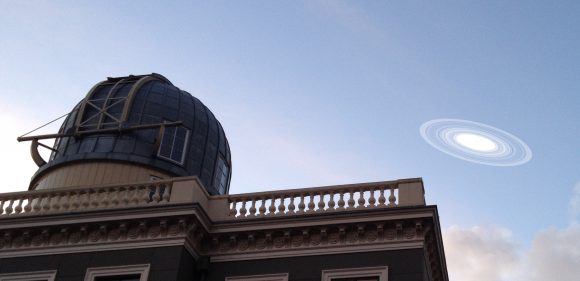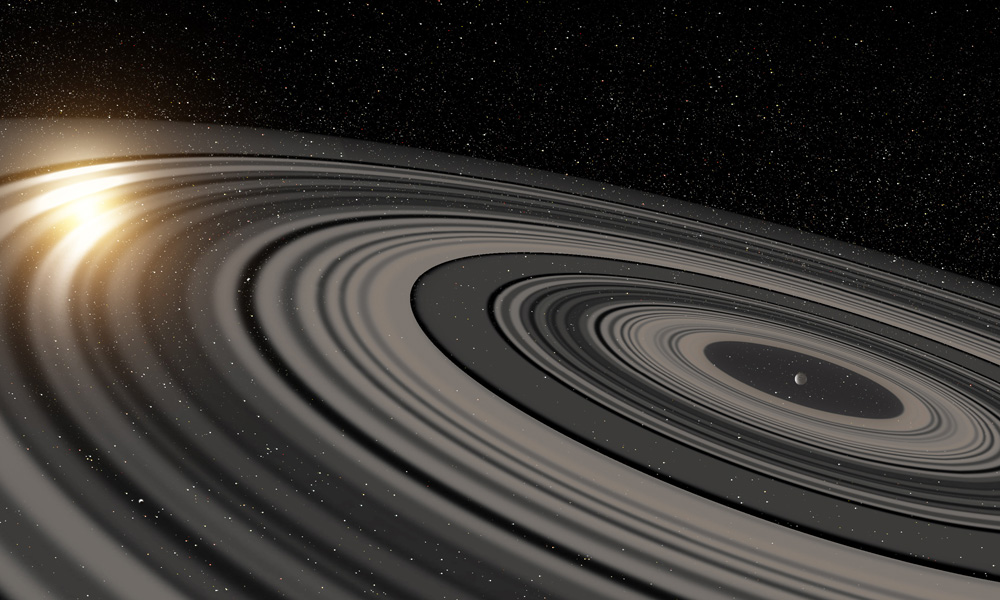Back in 2007, astronomers observed a series of unusual eclipses coming from a star 420 light years from Earth. In 2012, a team from Japan and the Netherlands reasoned that this phenomena was due to the presence of a large exoplanet – designated J1407b – with a massive ring system orbiting the star. Since then, several surprising finds have been made.
For example, in 2015, the same team concluded that the ring system is one-hundred times larger and heavier than Saturn’s (and may be similarly sculpted by exomoons). And in their most recent study, they have shown that these giant rings may last for over 100,000 years, assuming they have a rare and unusual orbit around their planet.
In their previous work, Rieder and Kenworth determined that the ring system around J1407b consisted about 37 rings that extend to a distance of 0.6 AU (90 million km) from the planet. They also estimated that these rings are 100 times as massive as our Moon – 7342 trillion trillion metric tons. What’s more, while J1407b’s existence is yet to be confirmed, they were able to rule out the possibility of it having a circular orbit around the star.

As a result, there were doubts that such a ring system could exist. Given the fact that the planet periodically gets closer to its star, the ring system would experience gravitational disruption. Therefore, Steven Rieder (of the RIKEN institute in Japan) and Matthew Kenworth (of Leiden University in the Netherlands) set out to assess how long such a ring system could remain stable for.
For the sake of their study, titled “Constraints on the Size and Dynamics of the J1407b Ring System“, they conducted a series of simulations using the Astrophysical Multi-purpose Software Environment (AMUSE) framework. In the end, their results showed that a ring structure with an 11 year orbital period and a retrograde orbit could survive for at least 10,000 orbits.
In other words, the ring system that they hypothesized back in 2012 could endure for 110,000 years. As Rieder (the lead author on the paper) explained in a statement, the results were surprising, but happened to fit the facts:
“The system is only stable when the rings rotate opposite to how the planet orbits the star. It might be far-fetched: massive rings that rotate in opposite direction, but we now have calculated that a ‘normal’ ring system cannot survive.”
How such a ring system could have come about is a mystery, as retrograde ring systems are quite uncommon. But Rieder and Kenworth have stated that they think it might be the result of a catastrophic event – such as a massive collision – that caused the rings (or the planet) to change the direction of their rotation.
Their results also indicated that a retrograde ring system would allow for eclipses, like the one that was observed in 2007. While there was some chance of these being caused by another object, the results suggested otherwise. “The chance of that is minimal,” said Rieder. “Also, the velocity measured with previous observations may not be right, but that would be very strange, because those measurements are very accurate.”
In the future, Rieder and Kenswoth hope to investigate the mysteries of this ring formation more closely. This will include how it could have formed in the first place, and how it has evolved over time. Their study has been accepted for publication in the journal Astronomy & Astrophysics and be viewed online at arXiv.
Further Reading: astronomie.nl, arXiv


If J1407b turns out to be a brown dwarf, wouldn’t that make this a binary star system? Have any other brown dwarfs or stars of any kind been found to have rings?
Could a planet with a gigantic ring system explain the exoplanet orbiting KIC 8462852? It’s been proposed before but after reading this article it would seem the most likely – to me anyway.